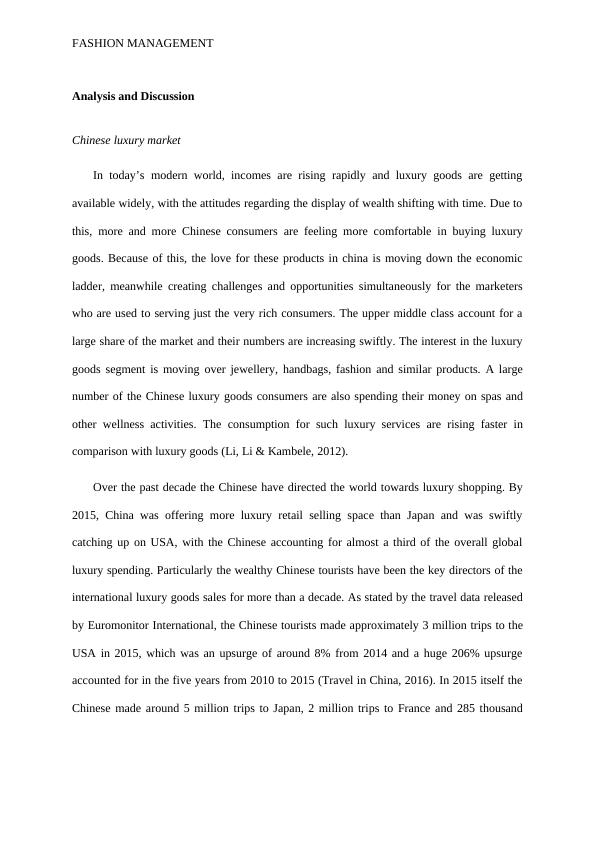FTMG30256 - Chinese Luxury Market, Fashion Management
15 Pages4390 Words238 Views
Nottingham Trent University
Fashion Management (FTMG30256)
Added on 2020-03-04
About This Document
In today’s modern world, incomes are rising rapidly and luxury goods are getting available widely, with the attitudes regarding the display of wealth shifting with time. Due to this, more and more Chinese consumers are feeling more comfortable buying luxury goods. The interest in the Luxury Goods Segment is moving over jewelry, handbags, fashion marketing, and similar products.
FTMG30256 - Chinese Luxury Market, Fashion Management
Nottingham Trent University
Fashion Management (FTMG30256)
Added on 2020-03-04
ShareRelated Documents
End of preview
Want to access all the pages? Upload your documents or become a member.
Overview of Chinese Outbound and Inbound Tourist Market
|14
|3620
|99
International Business Strategy: Case Studies on China and Myanmar
|6
|2064
|368
Accounting Financial Analysis - Report
|19
|3080
|51
Tourism Overview in Thailand PDF
|4
|862
|82
Choosing Target-Marketing Strategy and Attractive Market Segments
|5
|1292
|75




